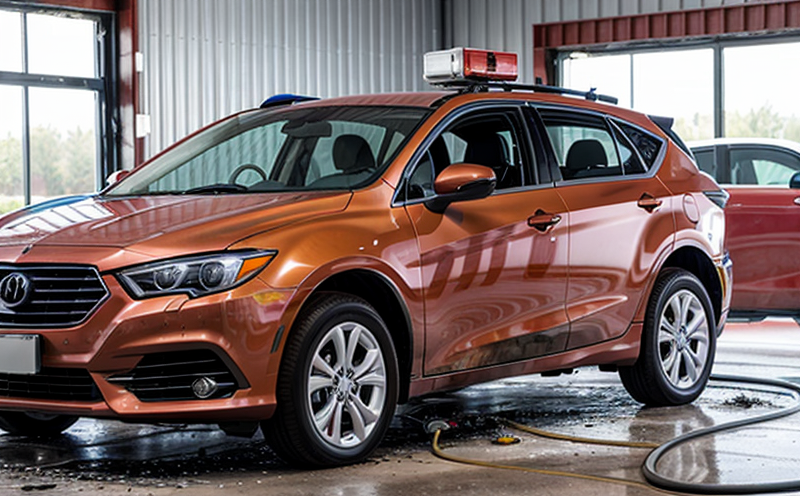Fire Safety Testing of Dashboard Covers
In today's automotive industry, ensuring fire safety is paramount. Automotive dashboard covers are exposed to various environmental conditions and potential ignition sources, making their fire resistance a critical factor in vehicle safety.
The primary goal of fire safety testing for dashboard covers is to evaluate the material’s ability to resist ignition and prevent the spread of flames under specified conditions. This ensures that even if a fire ignites within the cabin, the cover does not exacerbate the situation by catching fire or releasing toxic smoke.
Automotive manufacturers and suppliers must adhere to strict international standards such as ISO 13856-2:2017 for evaluating the flammability of plastic materials used in automotive interiors. These tests are crucial because they help prevent potential hazards that could lead to severe accidents or health issues.
The testing process involves controlled exposure of the material to heat, flame, and other ignition sources. The specimens are subjected to various conditions, including those simulating real-world scenarios such as open-flame exposures, radiant heat, and smoldering tests. The results provide valuable insights into how the material behaves under different stressors.
During these tests, it is important to consider not only the material's intrinsic properties but also its interaction with other components within the dashboard system. Understanding how materials like polyurethane, PVC, or fabric blends perform together is essential for ensuring comprehensive safety measures.
The testing process typically includes a series of steps aimed at assessing different aspects of fire resistance:
- Open flame exposure
- Radiant heat exposure
- Smoldering ignition tests
- Sustained burning time measurement
- Smoke density and toxicity levels
By meticulously following these procedures, laboratories can provide reliable data that helps manufacturers make informed decisions about material selection and design.
Scope and Methodology
| Test Procedure | Description | Acceptance Criteria |
|---|---|---|
| Open Flame Test | The specimen is exposed to an open flame for a specific duration. The aim is to observe the ignition behavior and flaming time. | The material should not ignite spontaneously or continue burning after removal from the flame source. |
| Radiant Heat Test | Exposure of the specimen under radiant heat sources to assess its resistance to heat transfer and ignition. | The material should not ignite or sustain burning for more than 30 seconds after removal from the heat source. |
| Smoldering Ignition Test | Material is subjected to smoldering conditions, and flame spread is measured over time. | The material should not sustain a flaming period greater than 20 seconds after the initial ignition. |
Benefits
- Enhanced Safety for Passengers: Ensures that in case of a fire, the dashboard cover does not ignite or release toxic smoke.
- Compliance with Regulations: Helps manufacturers meet international standards such as ISO 13856-2:2017.
- Improved Design Flexibility: Provides insights into material behavior, aiding in the development of safer and more aesthetically pleasing dashboard designs.
- Reduced Risk of Injury or Death: By preventing fires from spreading within the vehicle, these tests contribute to overall passenger safety.
- Cost Savings: Identifying issues early in the development process reduces the risk of costly redesigns and potential recalls.
Use Cases and Application Examples
The fire safety testing of dashboard covers is critical for various applications, including:
- Interior material selection in new vehicle models
- Development of safer automotive interiors
- Compliance with regulatory requirements and industry standards
- Reduction of fire risk in enclosed spaces within the car cabin
In real-world scenarios, this testing helps identify materials that can withstand prolonged exposure to heat and flames without catching fire. For instance, a dashboard cover made from flame-retardant polyester could be used instead of standard plastic, ensuring better safety performance.





